Finders keepers: How a squatter can claim a house
A stranger takes possession of an empty house without paying for it – and the law says it’s OK. How could this happen? It’s easier than you may think...
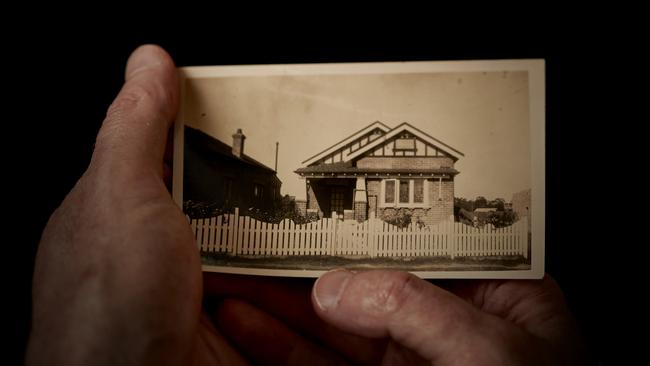
Graeme Hugo had known about the house for years. A modest Federation cottage in Sydney’s inner west, with intricate leadlight windows at the front and a long back garden abutting Canterbury Park Racecourse, it had played a small and for a long time seemingly inconsequential role in his family’s history. For several years in the late 1920s and 1930s, Hugo’s mother, aunt and grandparents lived here in quiet Malleny Street, Ashbury, before moving to a nearby suburb.
To Hugo, who grew up in the 1950s and attended a local school, the Ashbury home, with its neat covered veranda, was one of several addresses in his family’s timeline through suburban Sydney. While he had never been inside, he knew enough about its significance to include it in a small family history tour of Sydney in 1999. For a few minutes that day he sat in his car with visiting relatives and gazed at it from the opposite side of the street. Then he headed to the other addresses on his mother’s handwritten list of her childhood residences.
So when people now ask Hugo how he lost track of this house, he pauses, and with a mix of bewilderment and sadness replies: “That’s a good question.” For a long time he had no idea that his grandfather, Harry Downie, who bought the property in 1927 and died in 1947, was still registered as its owner. But when Hugo and his family finally discovered this in 2017, and despite an ensuing legal battle, it was too late. The property had been claimed by a stranger. And under an old law that exists in most of Australia, the little house in Ashbury, by then worth close to $1.5m, would soon legally be owned by someone who had never paid for it.
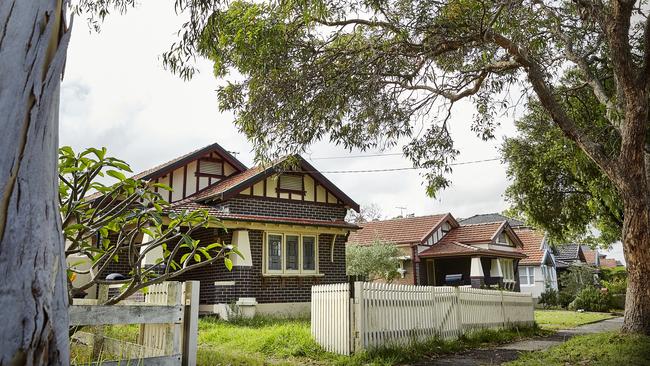
How do you take over a property in broad daylight? With patience, perseverance and a good dose of chutzpah, according to those who witnessed the attempted possession of an empty house in one of Sydney’s most affluent areas.
In a city obsessed with real estate, Vaucluse, in the city’s east, is a coveted spot, hemmed by the harbour and the Pacific Ocean. On one of the suburb’s quiet streets, with its sweep of mansions and expansive gardens, many of the homes boast the coveted trinity of Sydney views: the harbour, the Opera House and the Harbour Bridge.
In a neighbourhood in which properties sell for upwards of $6m, it’s hard to imagine that a home could be overlooked. But opportunity presents in many guises, and when a once well-established residence was neglected, some well-heeled squatters emerged. “It’s a large house on a reasonable block of land with a garden and it has magnificent views of the harbour,” says one long-term neighbour who witnessed the slow deterioration of the property over several years.
With the owner living overseas, the spacious home had been leased for thousands of dollars a week. But despite apparently being managed by agents, and despite the hefty rental price, it became increasingly dilapidated. The garden was overgrown and “windows needed to be repaired; walls were starting to deteriorate to the point where there were concerns about safety”, says the resident, who declined to be identified in the interests of neighbourhood accord.
From around 2013, when the last of several tenants left, the house remained vacant and no one seemed to care for it. “It just continued to deteriorate. You could see from the street it was in a bad way: ceilings were falling in with all the broken windows, and when we had a storm on occasion the windows would just go flying out.”
Though neglected, the house was not entirely ignored: in a sign of just how much location is valued in this part of the world, one New Year’s Eve a group of trespassers let themselves in to watch the city’s famed fireworks display. There was no other activity for five or six years, but then one day early in 2018 a neatly dressed couple appeared in the garden. “When you have a house like that in your street there’s always a certain amount of intrigue about what’s happening, what the owners might do to it,” says the neighbour. “You’re always a bit sensitive to what might happen to the property, because it’s an oddity to have a very valuable property doing nothing and an owner seemingly neglecting it. You start to feel it’s a bit of an eyesore.”
When the pair started fronting most weekends, working in the garden or doing minor roof repairs, several neighbours approached them. “If the owner doesn’t turn up, and you don’t see the owner with a builder doing the work, and there’s no evidence that they’re connected, you ask questions.” The answers were illuminating. “They didn’t know anything about the owner really… They didn’t even know the owner’s name.”
Council officials had no idea how the couple were connected with the property. Nor did the police, who, while reluctant to become involved in a civil matter, eventually approached the pair as they tended to the house. “And quite plainly their intention was to get adverse possession,” says the neighbour, who subsequently spoke to the officers. “It was no longer a secret.”

Commonly known as squatter’s rights, adverse possession is a law that exists in every state; only residents of the NT and ACT are immune from it. At its heart is the notion that a property’s ownership can be lost if it is left vacant for an extended time. “It’s hard for people who have lived through a 30-year property boom to understand, but in bad markets property isn’t worth anything,” says Dr Cathy Sherry, associate professor at the University of NSW’s faculty of law. “It’s just a liability. You don’t want to pay rates, you don’t want to know about it. Part of the logic of adverse possession is ‘use it or lose it’… It really is like finders keepers.”
While wording varies by state, the principle, which is based on an old English law, is unchanged: someone who occupies land can become its legal owner – without paying for it – if they can prove they have possessed it uninterrupted and exclusively for a specified number of years. For the squatter, success relies on time and timing. To claim adverse possession they need to have occupied a property openly and peacefully, without force or permission, for 12 years in most states and for 15 years in Victoria.
“It’s a very odd law,” says Peter Butt, emeritus professor of law at the University of Sydney. “You’re really stealing somebody else’s land, but the law recognises it. It must be the only area of law that validates theft.”
Alert to the prospect of adverse possession, several Vaucluse neighbours undertook enormous efforts over several months to contact the owner overseas, searching title deeds and sending multiple letters about the couple’s presence. When there was no response to the first letter, they had a second letter hand-delivered and sent a third by registered mail. Eventually in 2019 the owner and several relatives appeared and confronted the squatters, telling them: “This is our house.” The couple left without argument. “There was no resistance,” the neighbour says.
In the end it was a courteous eviction. And since then the owner of the Vaucluse house has begun renovations. But not all claims for adverse possession end so agreeably.
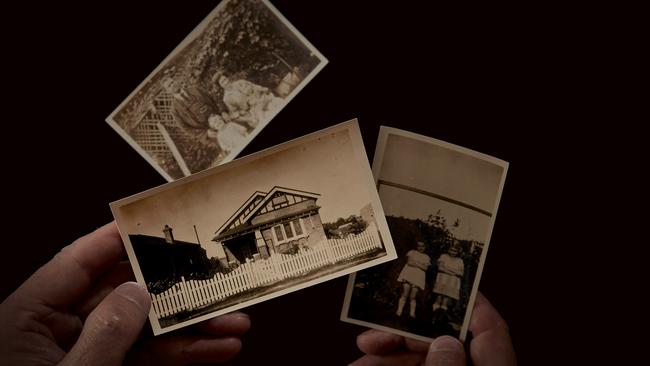
“This looked to me like an open-and-shut case: this is our house, my grandfather’s name is on the title,” says Graeme Hugo, an IT specialist who had little experience with litigation before police approached his family in 2017 with some unexpected news. Hugo, 66, has always lived in Sydney. The youngest of two sons, he was four when his parents divorced, and his late mother Mary worked as a bookkeeper to send her children to a private school. She shared some details of her childhood with her sons, who retained selected snippets. Graeme, for example, knew that his mother had lived with her sister Joyce and their parents Harry and Eveline Downie in several homes around Sydney. Of the four, only Joyce, now 97, is still alive.
An engineer who made scientific instruments, Harry Downie was an assertive man. “He just ran the family,” Hugo says of his late grandfather, whom he never knew. In 1927, the Downies moved to their new house in Malleny Street, Ashbury. The girls attended the local school and played with neighbourhood children. And then, just before World War II, they moved out. “The family myth is that Harry said, ‘This house has got white ants and I don’t want to live here anymore.’ And he just upped and moved the family to Ashfield,” says Hugo. “He was king of the house, and when he said, ‘we’re leaving’ they just went. Nobody would have talked back, especially my grandmother. She was a really gentle, quiet woman.”
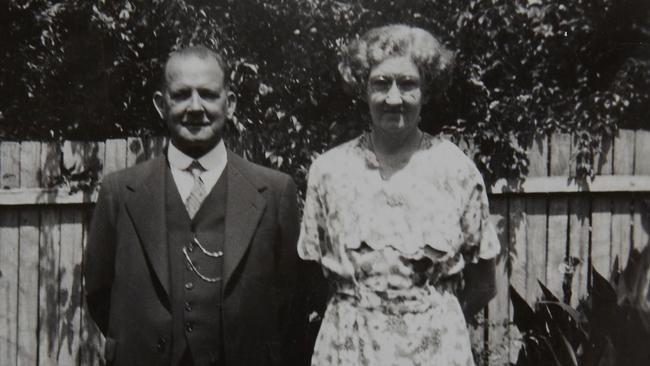
Harry Downie did not leave a will. Unbeknown to his family he continued to own the Ashbury property, which at the time of his death was rented to a woman who lived in the house for more than 50 years as a protected tenant. Under a war-era law, rent could only be increased with her agreement. She paid a small amount of money to a local real estate agent periodically and after she died in April 1998, the house was left vacant.
Later that year, Bill Gertos, an accountant turned developer, noticed that the property was unoccupied and in need of repairs. Finding the house open, he walked through its rubbish-strewn rooms; most of the windows were closed but some were broken. “Water was dripping from the roof into the bathroom and into the hallway. The whole place was dark and smelly. It was not occupied for a long time and I could not say how long it had been since someone had stayed there,” he told the NSW Supreme Court 20 years later. Satisfied that the house was unoccupied and uninhabitable, “I left the property and then decided to take possession of it myself”.
The next day, Gertos brought in a builder. “I instructed him to make the building watertight, secure it, to refit the rear door, and change the locks on the front door and give me the key.” Having spent around $35,000 on repairs, Gertos took possession of the property in the second half of 1998. He started paying rates, water levies and land tax and appointed a managing agent. Within weeks he had signed a lease, listing himself as landlord.
Gertos claimed to have spent more than $100,000 on repairs over the following years. In 2017, 19 years after first stepping into the empty house, he applied to the Registrar General to be recorded as its proprietor. In October that year, the Registrar General gave notice of its intention to approve his claim.
Around this time, police knocked on the door of Colin Hugo, Graeme’s older brother, asking about their aunt Joyce – Harry Downie’s only surviving child – and mentioning a property in Malleny Street. Downie was still listed as the titleholder, police revealed, but a developer was seeking to claim ownership. “I thought a lot of things very quickly,” says Graeme Hugo, whose brother phoned him that day. “I thought about our family’s struggle. My mother was divorced and raised us by herself, and all those years she had this property she didn’t know about; our grandmother never told her. And then the second thought was that we should inherit it. This is our property.”
With his aunt and brother, Hugo went to the NSW Supreme Court to stop the developer’s claim, confident of winning because his grandfather’s name was still on the title. But in a judgment handed down in October 2018, Justice Rowan Darke ruled against Harry Downie’s family. “Mr Gertos’ possession of the land since about late 1998 can be regarded as open, not secret; peaceful, not by force; and adverse, not by consent of the true owner. It has continued without interruption to the present day.”
Although their grandfather and father’s name was on the title, the Hugo brothers and their aunt were not the rightful owners. “Having considered the totality of the evidence,” the judge ruled, “viewed in the light of the character of the property being a single dwelling suburban block, I am comfortably satisfied that since about late 1998 Mr Gertos has been in factual possession of the land with the intention of possessing the land. In essence, Mr Gertos succeeded in taking and maintaining physical custody of the land, to the exclusion of all others, and he has assumed the position of a landlord.”
Gertos was awarded the home – and Downie’s family was ordered to pay his legal costs.
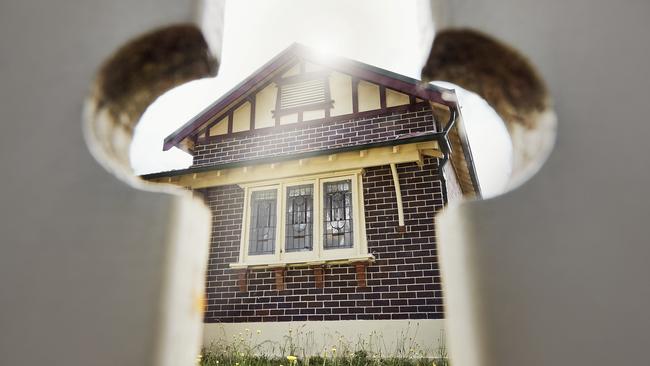
“If someone genuinely proves that a property belongs to them, the law will give it back to them. But there’s a time limit,” says UNSW’s Dr Cathy Sherry, an expert in property law. She considers adverse possession laws to be logical, fair and, hundreds of years after they were introduced in England, still valid in Australia in 2020. “If you don’t look after property you own, it doesn’t just affect you. It’s a loss [for] the community… It has an effect on the street you live in,” she says. “I think it really is necessary to make sure that property is properly cared for.”
But the University of Sydney’s Peter Butt sees the law as having less relevance today than when it was first created, in order to ensure arable land was not left idle. “That doesn’t fit easily with modern perceptions where sometimes it is in the community’s environmental interest if land is unused.” Do we still need the law today? “I expect not,” he says. “If you ask, ‘What is the public good?’, we don’t need it. But it’s so well established that it’s just part of the legal system.” And while the chances of losing a property to this old law are slim, “realistically it can happen. If you’re an owner, you can’t just turn your back to the possibility of someone making a claim against your title. And if you’re a squatter, good luck to you. It’s there in law.”
There have been several publicised cases in recent years involving houses in Sydney and Adelaide whose owners had either died or moved overseas. Squatters had attempted to take adverse possession but failed when those properties were forcibly sold to cover outstanding rates and other debts. Other claims have involved land, gardens or driveways.
Earlier this year a resident of inner-Sydney’s Redfern, Christopher Luke Hardy, was granted adverse possession over a 3.35sqm remnant of a former dunny lane nestled between his property and a neighbour’s that he had converted into a small Japanese-style garden. This possession, the court held, had extinguished the neighbour’s title on the land. In the same suburb, a squatter’s hopes for adverse possession of a rundown terrace whose owner had not been sighted since returning to China in 2007 were dashed in 2017 when court-appointed trustees put the house up for auction.
Successfully proving adverse possession “really is quite rare, but the more people are aware of it the more it’s likely to happen,” says Sherry, who adds it is almost impossible to lay claim to council land. Claims also need to be made for the entire area of a Torrens title, not just part of it, meaning that cases are more likely to occur in rural areas, where land is passed through families who are not administering wills or in markets where less attention is paid to real estate movements.
In one often cited case, land in Melbourne that had been gifted to Whittlesea City Council in 1908 for a new shire hall that was never built was eventually taken over by some residents. The couple had bought an abutting property in 1958 and had been using the land as their own, successfully claiming adverse possession in 2004. Across the continent, the Supreme Court of Western Australia last year ruled in favour of one set of neighbours who had installed garden beds, limestone blocks and reticulation pipes in some disputed adjoining land over many years. That rear garden was fenced. A claim for an unfenced front garden was not successful.
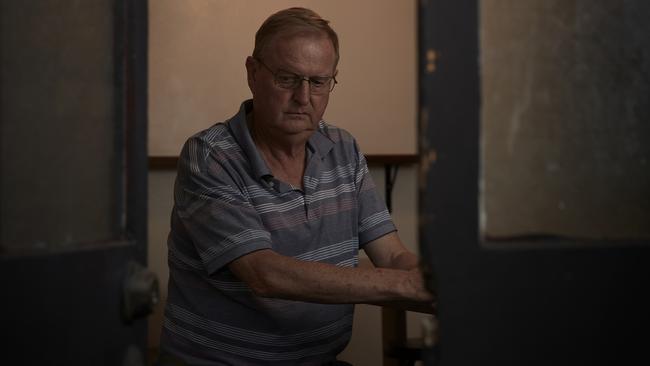
When cases do succeed they can have enormous consequences, transferring the ownership of a property to someone who may not have spent much, if any, money acquiring it. For Graeme Hugo, that realisation comes with a lingering sense of loss. Two years on, he remains deeply dejected by efforts to assume control of a property forgotten to his family. “You get the title and it says Henry Thompson Downie owns this property and Henry Thompson Downie is my grandfather and [aunt] Joyce’s father. And [mum] Mary lived there and Joyce lived there,” he says passionately. “This house was my grandfather’s house. And we tried to get it back. We had all the neighbours agreeing with us and we had a big court case and we lost.”
In hindsight, he wishes he had never known the true history of the house in Ashbury, which was sold by its unlikely owner in February this year for $1.4 million. “I wish the police hadn’t knocked on the door,” Hugo says sadly. He pauses, looks down and blinks hard. “It would have been better if I didn’t know.”


To join the conversation, please log in. Don't have an account? Register
Join the conversation, you are commenting as Logout